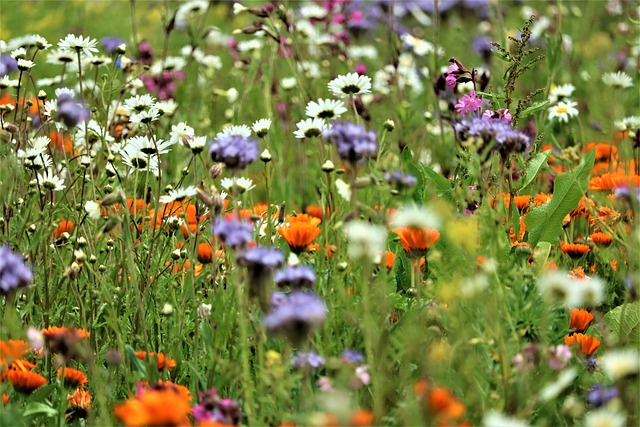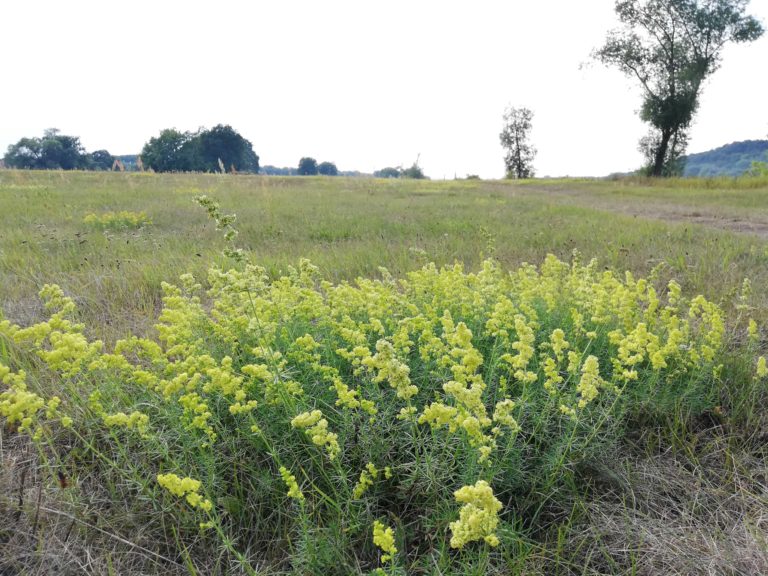Grassland, which covers around 40 % of the global land area, provides numerous ecosystem services, including biodiversity, water storage, erosion control and: long-term carbon storage in the soil. In the volume “Warnsignal Klima: Hilft Technik gegen die Erderwärmung?“ (translated: Warning signal climate: Does technology help against global warming?) published in 2023, Vicky Temperton from the Institute of Ecology at Leuphana University writes about the importance of species-rich grassland in the context of climate change mitigation and adaptation. The resilience of grassland to extreme weather events such as droughts, fires or heavy rainfall and its high albedo (ability to reflect sunlight) are important factors but are often neglected in the discussion about natural climate solutions (NCS). Why is that?
Of forests and knowledge gaps: a holistic view of climate protection
Temperton points out that there are considerable knowledge gaps in the scientific analysis of the climate protection potential of different ecosystems and that these constitute and reinforce silo thinking in both the scientific and political context. For example, there are fewer studies on how carbon storage is influenced by the intensity of land use, on the complexity of storage mechanisms and conditions, and fewer comparative studies on the storage capacity of different ecosystems. In the political sphere, the separation of the ministries of agriculture and nature conservation, for example, means that interactions between land use, habitat and climate protection are not sufficiently taken into account and considered together.
The current focus on afforestation as the best solution for climate protection should therefore also be viewed critically. The so-called “biome bias”, which favours forests in the public perception, can in the worst case even lead to ill-considered afforestation initiatives resulting in a loss of biodiversity at the expense of other ecosystems. However, the preservation of biodiversity is crucial for the effectiveness of climate protection measures, as a high level of biodiversity increases the stability and resilience of ecosystems and habitats.
Of interactions and foresight: thinking strategies together
We need to consider biodiversity loss as much as climate change as well as their interactions. In the search for good natural climate solutions, we would do well to undertake comparative scientific assessments that systematically compare the different multifunctional outcomes of different habitat types. Thus, more integrative measures should also be developed and implemented politically. One such measure is the restoration and preservation of species-rich grassland – a win-win solution for the protection of the climate and biodiversity.
The article calls for a broader consideration of the role of grasslands and other ecosystems such as peatlands, wetlands, heaths, mangroves and seagrass beds in climate science and policy. The complexity of ecological systems and processes must be recognised and the interactions between climate and species protection must be placed at the centre of an effective sustainable strategy.
You can find the article and the entire volume here (only German): https://www.klima-warnsignale.uni-hamburg.de/buchreihe/climate-engineering/
The “Warnsignal Klima” book series so far comprises 20 volumes with around 800 environmental and climate-related articles written by around 1,500 experts from almost 500 research and environmental organisations. The aim of the series is to contribute to the broad public debate at educational institutions, in the media, among interested people as well as in politics and administration about our relation to the environment and climate protection.



